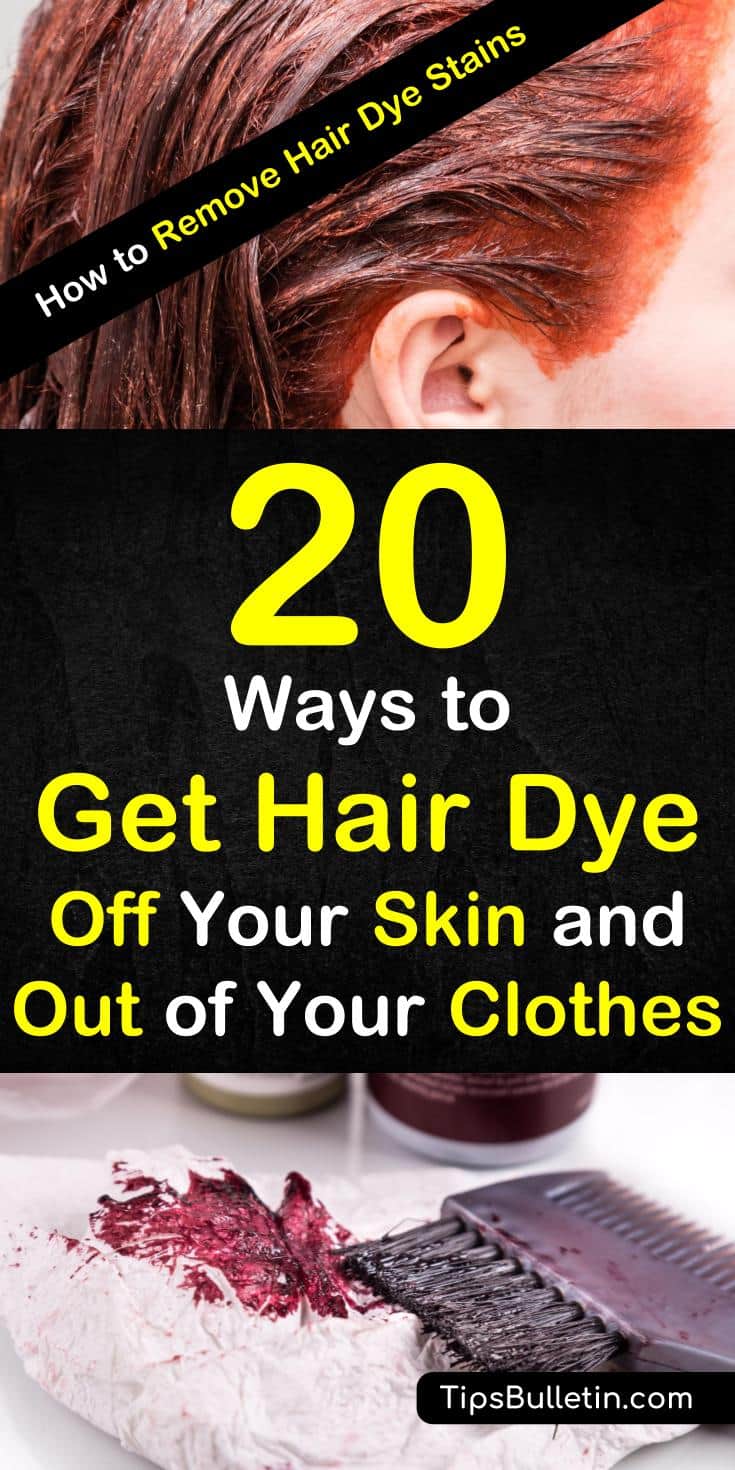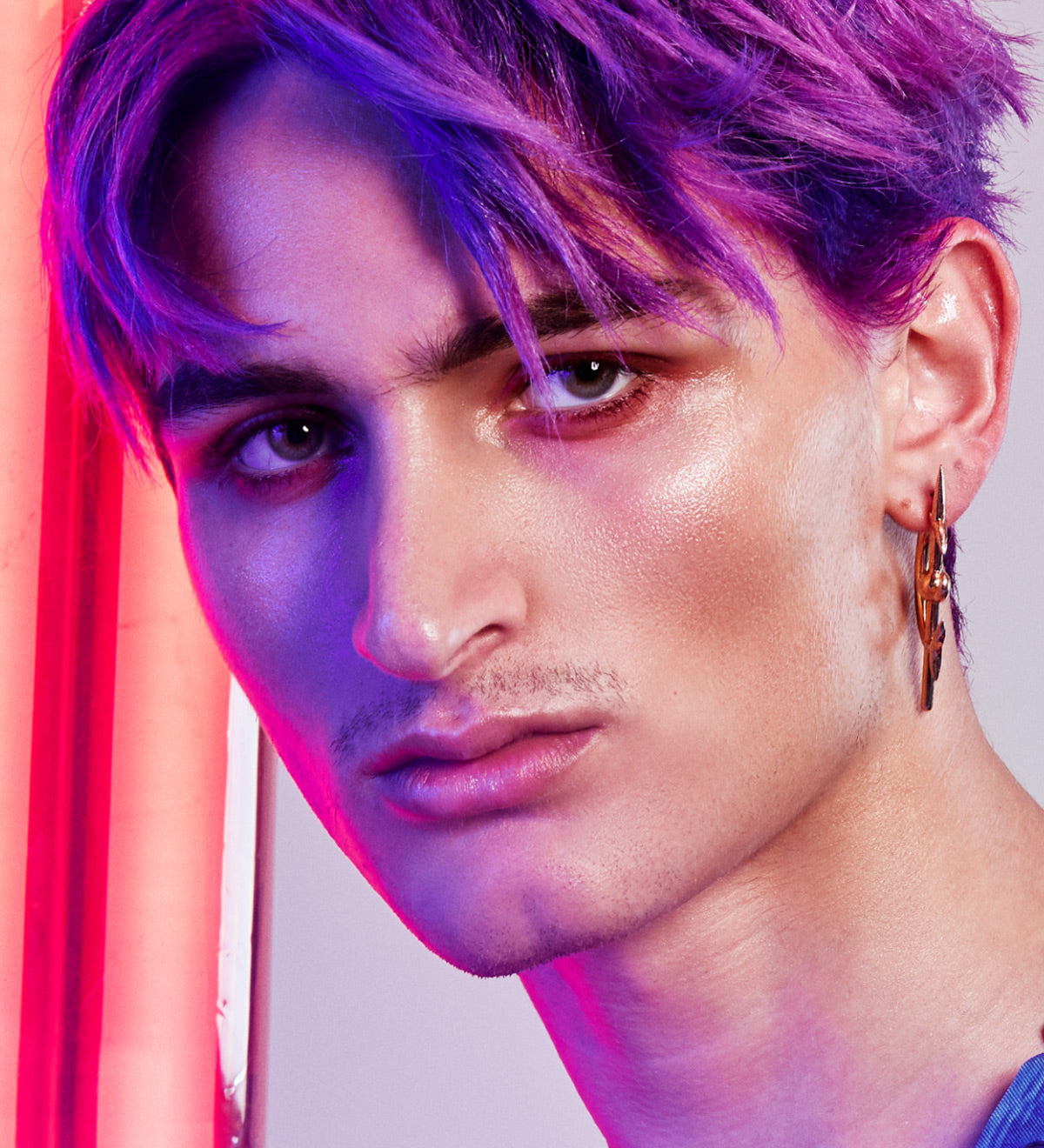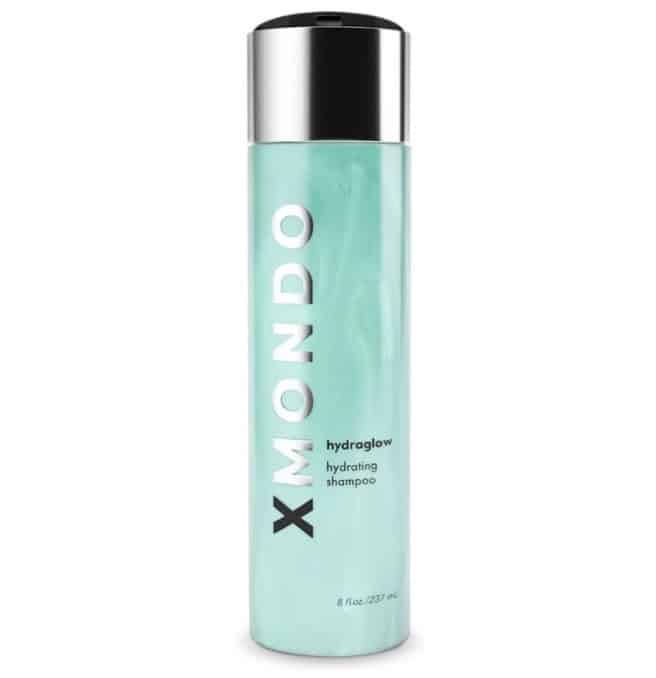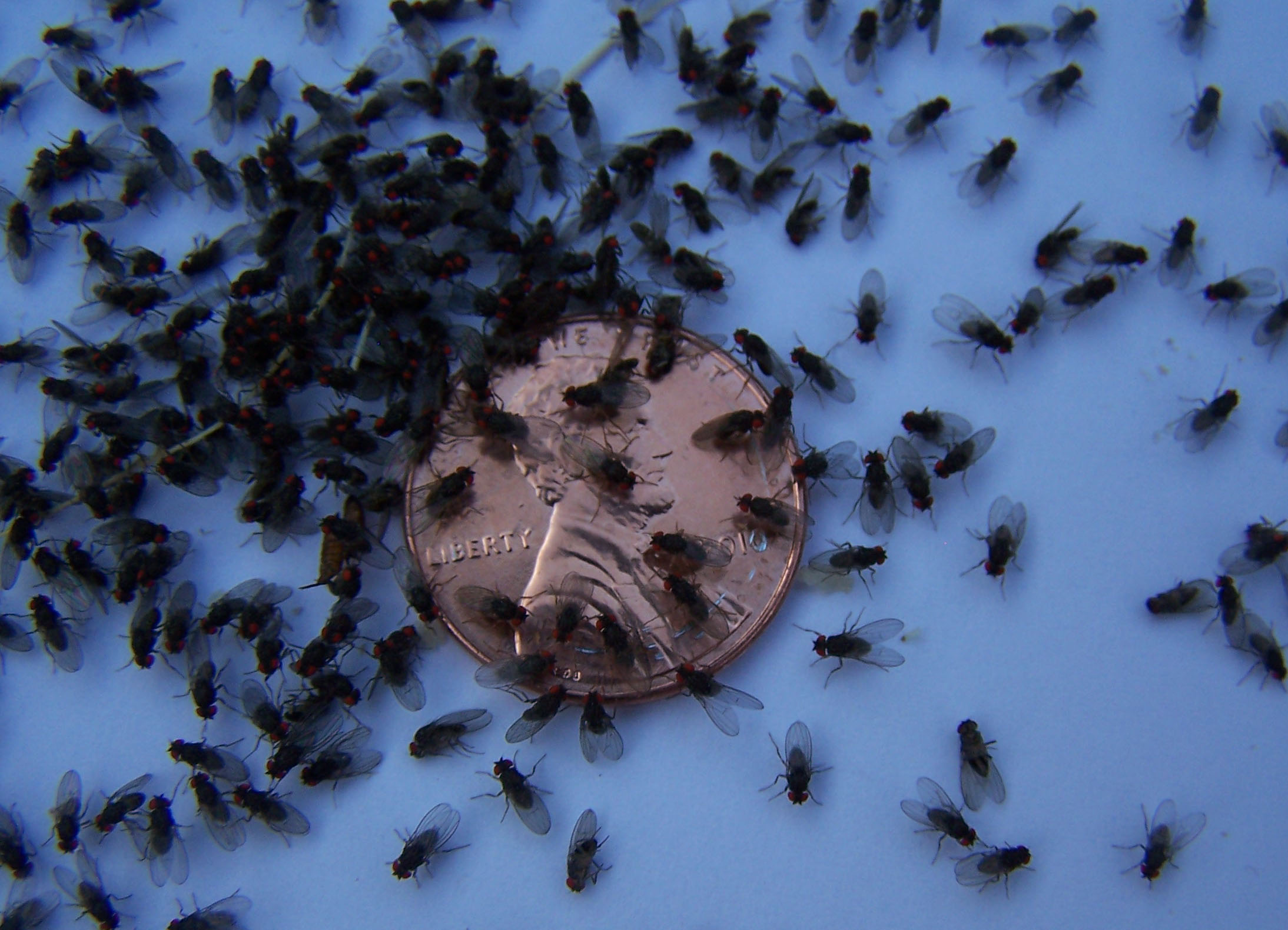Table Of Content

Note, nail polish removers are often made with acetone, ethyl acetate, and isopropyl alcohol which are ingredients that can dehydrate your skin. When applying hair dye, patience and preparation are essential. This ensures a clean dyeing process and helps you achieve your desired results.
What Doesn't Get Hair Dye Off Skin?
However, getting great results using at-home hair dyes without staining your skin can be difficult when doing it yourself. The best hair dyes have properties that allow them to remain in place through weeks of shampoos. Those same qualities can make it hard to remove hair dye stains that get on your face, forehead, and hands after the process.
How to prevent hair dye stains
But people love this method because it’s very quick and effective. If you’ve ever found yourself with dyed hands or stained skin after coloring your hair, you know how difficult it can be to remove that pigment. Like toothpaste, baking soda has enough grit to scrub your hands and nails without causing damage to your skin.
Laser Hair Removal for Dark Skin 2023: Safety, Risks, and Tips - Cosmopolitan
Laser Hair Removal for Dark Skin 2023: Safety, Risks, and Tips.
Posted: Mon, 22 Aug 2022 07:00:00 GMT [source]
Removing dye from hands
The best makeup removers are oil-based and do not cause irritation. These products may also be effective in removing stubborn hair dye stains, depending on the ingredients involved. You can use soap and water or other household products to remove hair dye stains. But using certain products, like nail polish remover, may also damage your skin.
“All hair coloring that’s formulated for use on the head is safe to come in contact with the scalp,” says Patel. Aside from it not looking the best, according to Dr. DeRosa, hair dye doesn't usually pose any big risk to the skin, but it can cause redness and itchiness. “If you’re concerned about a rash or particular skin condition, be sure to consult with your doctor,” she suggests.
You might experience an itchy scalp because of an allergic reaction to a hair product or because the scalp is oily or dry. When someone has an allergic reaction to henna, it is usually caused by the added chemicals and not the henna itself. The leaves and stems of the henna plant contain a dye called lawsone. When the plant is crushed, whether fresh or dried, this copper-colored dye is released. It is then collected as a powder and mixed with water to form a paste. In some cultures, people add ingredients like lemon or lime juice, tea, or essential oils.
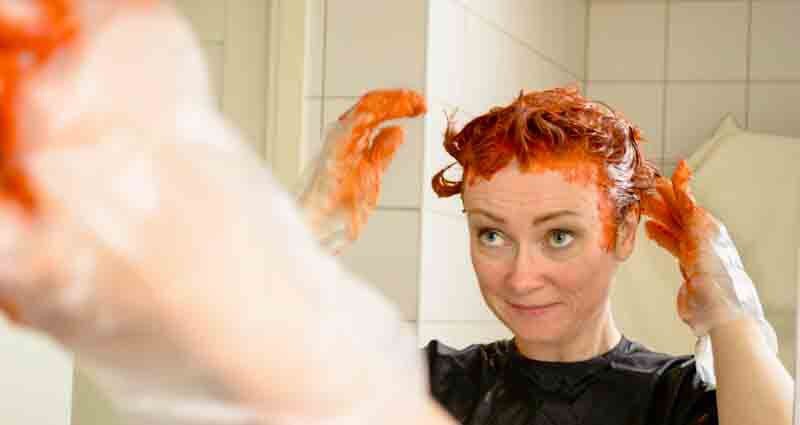
Use a washcloth to gently brush the toothpaste over the stain without irritating the area. While removing hair dye isn’t quite as straightforward as applying color, it is possible—and you don’t need to hit the salon to make it happen. Here, we’ll teach you how to use hair color remover to help fade unwanted color and share some of our tried-and-true tips for getting back to your roots (without unnecessary damage). A scalp scrub can help remove excess oils, dead skin cells, and product buildup that pulls up on the scalp and the hair roots.

Exfoliating facial washes and gels contain mild concentrations of AHAs (alpha-hydroxy acids) and BHAs (beta-hydroxy acids). While no research has tied these products to the removal of hair dyes, they may be effective in sloughing off the dyed skin cells during the exfoliation process. Removing hair dye from your scalp without stripping the color from your hair is challenging. Use a shampoo with light exfoliating ingredients like salicylic acid or glycolic acid, which can work to remove the stained skin cells and bring new cells to the surface. The abrasive ingredients in some types of whitening toothpaste may remove hair dye from your skin.
Try Shampoo
Not only does toothpaste remove stains from your teeth, but it also eliminates traces of hair dye. Bennett suggests applying a small amount of non-gel toothpaste to a cotton swab and gently massaging it into the stain. Petroleum jelly is a gentle makeup remover that provides the added benefit of moisturizing while it removes cosmetics from your skin. Leaving the petroleum jelly on for a few minutes before you wipe it off may help to remove stronger stains like hair dyes. To use as a dye remover, pour a small amount of rubbing alcohol onto a cotton ball or cotton pad. Once the dye is off, be sure to rinse the area with warm water and soap.
Once the dye begins to lift, wipe the area clean with a damp cloth. "There's a common allergen, known as paraphenylenediamine (PPD), in hair dye that a small percentage of people will react to," she explains. Unfortunately, when that happens, your entire head becomes itchy and inflamed, which, according to Shamban, is a "true hair dye disaster." And, more importantly, how to prevent the dye from staining in the first place. "Typically, the scalp won't stain unless you're using direct dyes," she explains. "This step will prevent chemicals from contacting the skin, so they can't cause allergy or irritation," she explains.
Apply the mixture to the affected area, lather, scrub, and rinse. Just exercise caution—bleach is an extremely harsh agent that can irritate sensitive skin, harm eyes, and discolor hair. Cleansers and alcohol can strip your skin of more than just the dye you're trying to remove. "Especially after using rubbing alcohol on the skin, it is important to repair the skin barrier with a moisturizer," Dr. Zeichner explains. "I recommend a petrolatum-based product, as it forms a protective seal over the skin, and the newest generation of these moisturizers come in light lotion formulations that won't leave you feeling greasy." The rate at which hair dye comes off your skin can vary based on whether the hair dye is permanent or semipermanent and the amount of dye causing the stain.
Either of these can prevent the dye from seeping through should it land in those areas. Nail polish remover is a widespread technique used to remove hair dye from the skin –but if you choose to use this solution, proceed with caution as acetone can be irritating to the skin. But if you forgot this precautionary measure, you can use petroleum jelly anyway. “All you have to do is start rubbing and massaging the jelly into your skin,” she adds. This method is very gentle for your skin, but be careful with your eyes because it can cause serious irritation to them. Many people out there choose to dye their hair and brows at home, but for those who have never done it before, the process can become quite messy.
The next time you color your hair, follow steps like applying moisturizer or petroleum jelly to your hairline and around your forehead before applying dye. However, there are techniques available to help prevent hair dye stains occurring. There is a variety of different techniques that can help remove hair dye stains. This method is best used on small stains, given that rubbing alcohol can be very drying to the skin and emit a strong odor.
The longer the dye remains on your skin, the deeper it can penetrate, making it even harder to remove. Dyeing your hair at home can be a fun way to freshen up your look when you can't make it to the salon. But anyone who has dyed their hair at home knows that things can (and often do) get a little messy when going the DIY route. Sydney is a freelance writer in the beauty, lifestyle, and wellness space.
Whether it's a hairline that gets stained with dye, a face, or even hands, it seems pretty hard to get off. Baking soda is slightly abrasive which makes them ideal for scrubbing hair dye from the skin. These products usually include professional dye stain removers — such as Color Oops and Roux Clean Touch — that are a bit more aggressive than home remedies. Lather a small amount of soap or cleaner between your hands and gently apply it to the stained area. You can attempt to remove it by gently blotting the stain with a damp cloth or cotton pad.
